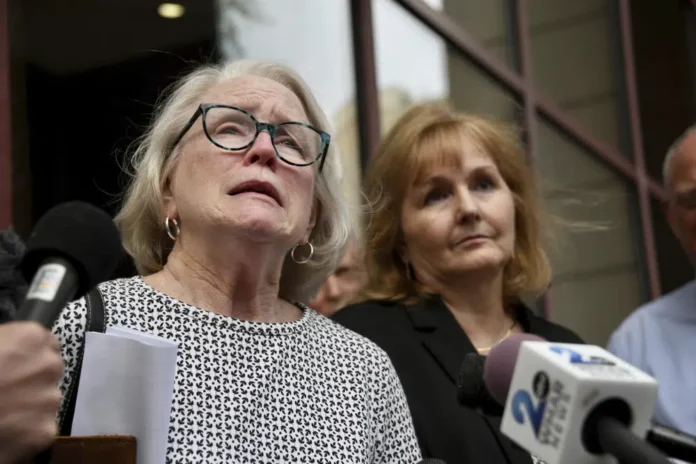BALTIMORE (AP) – More than 150 Catholic priests and others associated with the Archdiocese of Baltimore have sexually abused more than 600 children and often escaped accountability. A long-awaited state report released has revealed the extent of 80 years of abuse. After the abuses came to light, the church blamed its leaders for decades of cover-ups.
The report paints a dire picture of the archdiocese, the oldest Roman Catholic diocese in the United States and encompassing much of Maryland. Between 1964 and 2004 he lived and worked with 11 abusers in St. Catonville. A deacon who admitted to abusing over 100 children. Another priest was allowed to fake hepatitis treatment and use other excuses to avoid allegations of abuse. The death toll could be much higher, the Maryland Attorney General’s office released the results of a year-long study during Holy Week, considered Christianity’s holiest period leading up to Easter Sunday. The report was redacted to protect the confidential material of the grand jury.
Abuse accused of “life imprisonment”
The victim said the report was long overdue for public disclosure given the shameful allegations the church has faced over the decades.
Jean Hagadon Werner said she was sexually abused as a teenager in Baltimore by A. Joseph Maskell, a priest who served as a counselor and pastor at a Catholic high school. She reported her abuse to church authorities in the early ’90s when memories of the trauma finally surfaced, some 20 years after being repeatedly raped.
According to reports, Maskell abused at least 39 of her victims. He denied the allegations and was never criminally charged before his death in 2001. The Associated Press does not typically name victims of abuse, but Wenner has expressed an awareness of the issue. I spoke publicly to raise it.
Kurt Ruprecht, who also experienced abuse as a child, said he was in his late 40s when he compiled his memories of the trauma. He said the realization brought him some relief, as he described decades of self-destructive behavior and mental health issues, but left him overwhelmed with anger and disbelief.
According to the Baltimore Report, church leaders were focused on hiding the abuse and did nothing to protect the victims or stop the abuse. In some circumstances, victims reported the abuse to the priest who had abused them. Also, when law enforcement learned of allegations of abuse, police and prosecutors often showed respect and called for “church leadership.” They were uninterested in investigating who knew what and when,” the report said.
The nearly 500-page document details many cases of leaders taking steps to protect accused clerics. For example, instead of banishing them, they are forced to retire with financial assistance, have them stay with pastors, or report them to law enforcement suspects not to report abuse. . For example, in 1964, Father Lawrence Brett admitted to sexually abusing teenagers at a Catholic University in Connecticut.
He was sent to New Mexico under the guise of treatment for hepatitis, and then to Sacramento, where he reported that another teenager had been abused by Brett. , abused more than 20 victims.
After some students accused Brett of sexual abuse in 1973, Brett was allowed to resign, saying he had to look after his sick aunt. School officials did not report the abuse to authorities, and dozens more victims later came forward. He was never charged and died in 2010.






